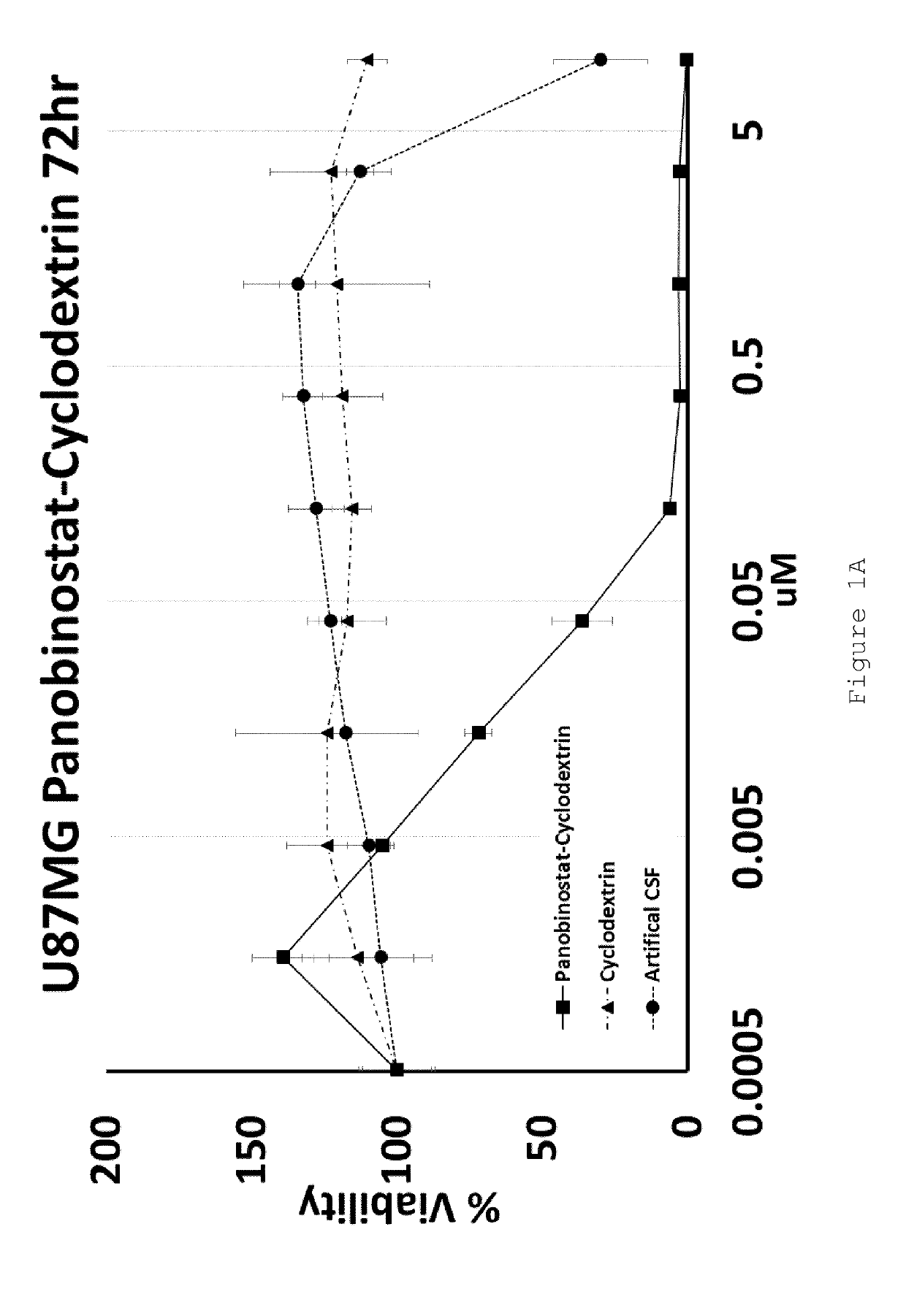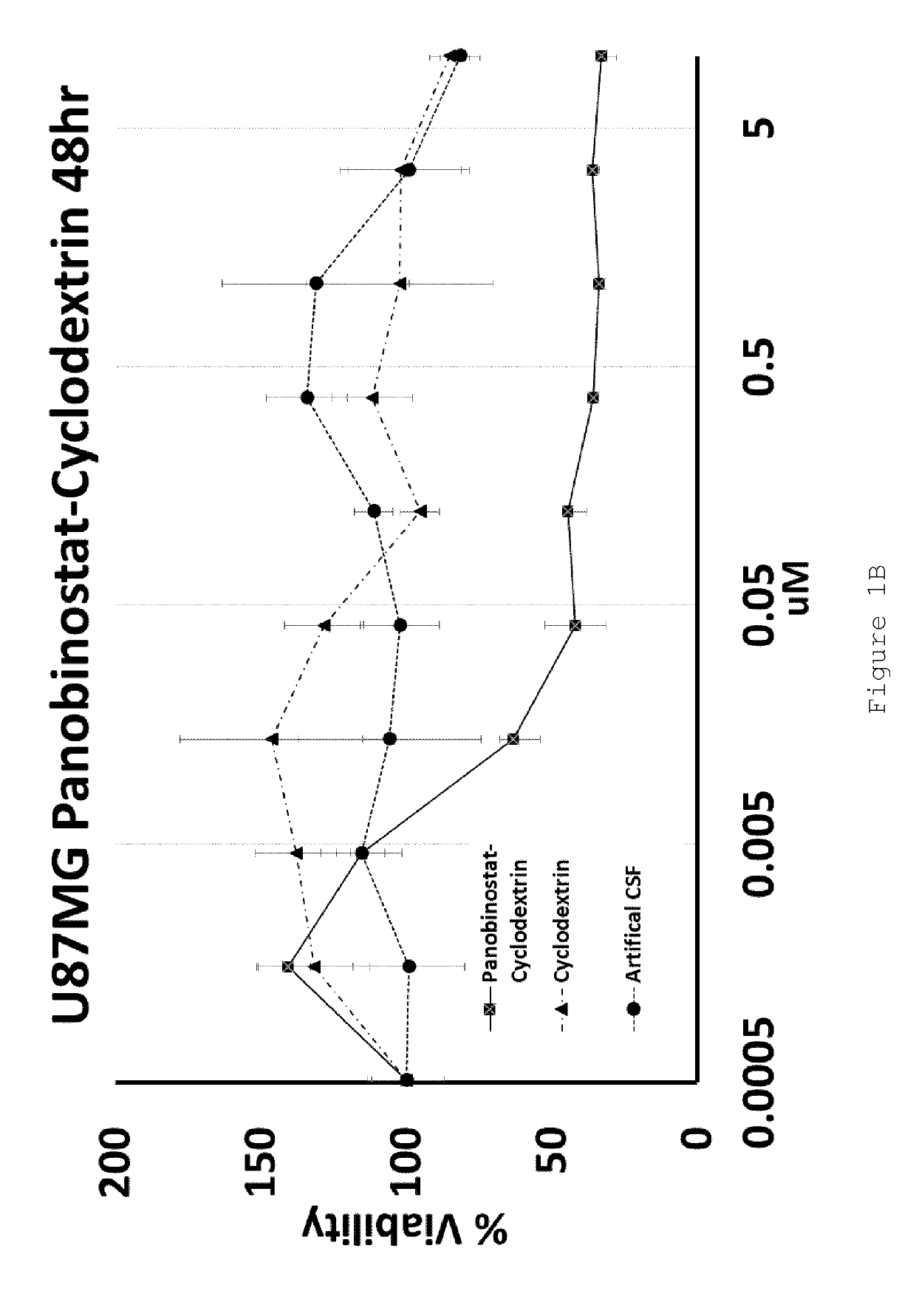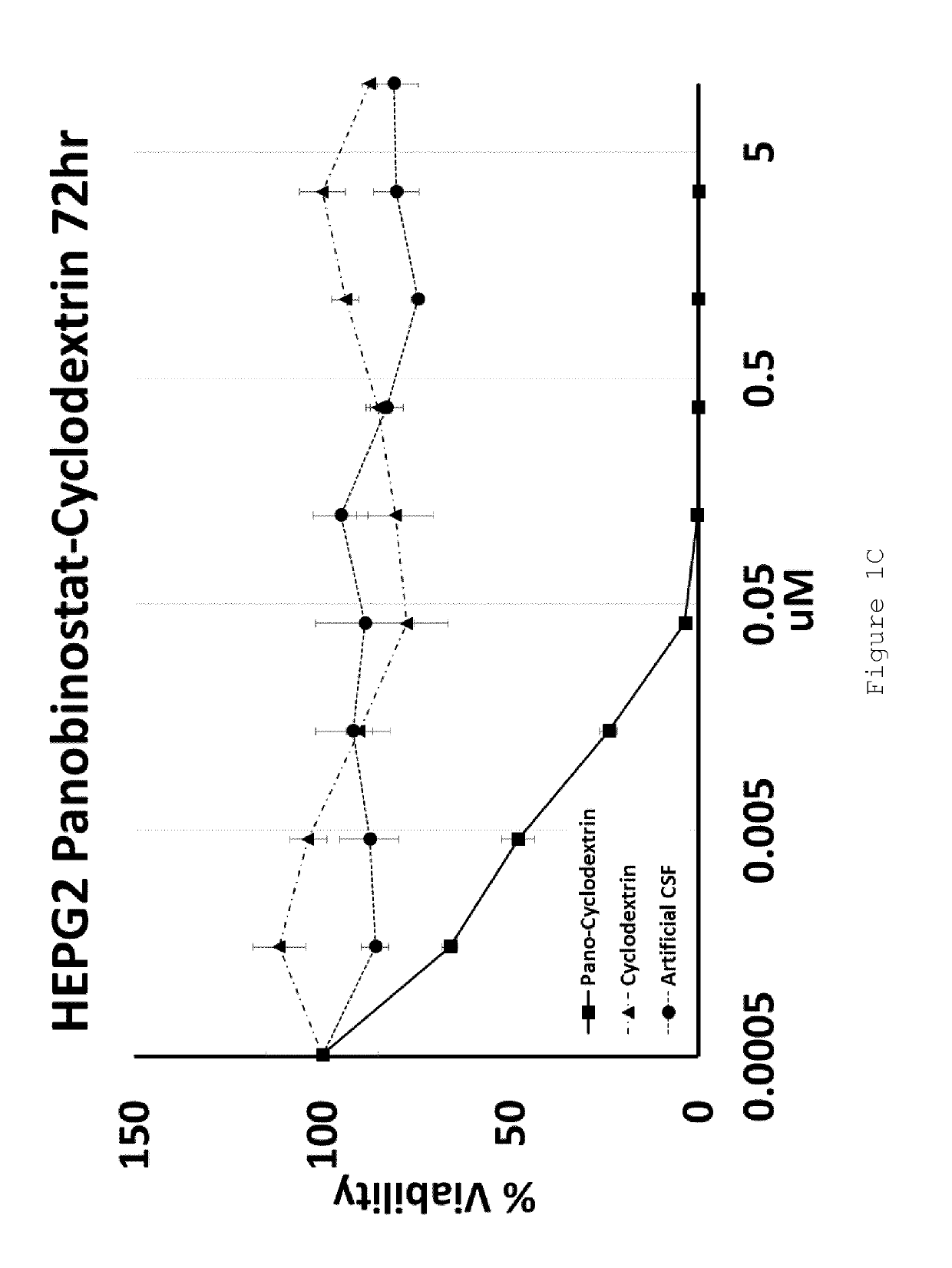Cyclodextrin-panobinostat adduct
a technology of cyclodextrin and panobinostat, which is applied in the direction of macromolecular non-active ingredients, drug compositions, intravenous devices, etc., can solve the problems of negative and achieve excellent hdac inhibitory activity, and negatively affecting the stability of panobinosta
- Summary
- Abstract
- Description
- Claims
- Application Information
AI Technical Summary
Benefits of technology
Problems solved by technology
Method used
Image
Examples
example 1
for Production of Panobinostat-2-Hydroxypropyl-β-Cyclodextrin Adduct
[0068]Panobinostat free base is poorly soluble in water. It is similarly insoluble in concentrated aqueous solutions of 2-hydroxypropyl-β-cyclodextrin (HP-β-CD) (450 mg / ml). However, Panobinostat is soluble in citrate buffer at pH 3.0.
[0069]Solution A: 0.1M Citric Acid in Water
[0070]Citric acid (Sigma Aldrich C-0759; Lot#21K0042) (2.101 g) was weighed out and dissolved in 100 mL ultrapure water.
[0071]Solution B: 0.1M Sodium Citrate in Water
[0072]Sodium citrate (tribasic) (Sigma Aldrich C3434; Lot#1304640 / 41807230 (2.944 g) was weighed out and dissolved in 100 mL ultrapure water.
[0073]Solution C: 0.1M Citrate Buffer
[0074]Solution A (82 mL) and solution B (18 mL) were added to a 250 mL Duran flask and mixed briefly to form [C]. The pH of the citrate buffer was measured and found to be pH3.0.
[0075]Solution D: 10 mM Panobinostat Solution in Citrate Buffer (25 mL)
[0076]Concentration=10 mM=0.01M
[0077]Volume=25 mL=0.025 L
[...
example 2
me Assays
[0093]The inhibitory activity of panobinostat dissolved in DMSO and that of the HP-β-CD panobinostat adduct (prepared as described in Example 1) were compared against HDAC types 1-11. Both were tested in singlicate 10-dose IC50 mode with 3-fold serial dilution starting at 10 μM against 11 HDACs. HDAC reference compounds, Trichostatin A ((R,2E,4E)-6-(4-(dimethylamino)benzoyl)-N-hydroxy-4-methylhepta-2,4-dienamide) and TMP 269 (N-((4-(4-phenylthiazol-2-yl)tetrahydro-2H-pyran-4-yl)methyl)-3-(5-(trifluoromethyl)-1,2,4-oxadiazol-3-yl)benzamide), were tested in a 10-dose IC50 with 3-fold serial dilution started at 10 μM.
[0094]The substrates were as follows:
[0095]Substrate for HDAC 1, 2, 3, 6, 10: Fluorogenic peptide from p53 residues 379-382 (RHKK(Ac)AMC)
[0096]Substrate for HDAC 4, 5, 7, 9 and 11: Fluorogenic HDAC Class2a
[0097]Substrate (Trifluoroacetyl Lysine)
[0098]Substrate for HDAC 8: Fluorogenic peptide from p53 residues 379-382 (RHK(Ac)K(Ac)AMC)
[0099]IC50 values were calcula...
example 3
[0102]Cytotoxicity of HP-β-CD panobinostat was assessed in Heptacellular Carcinoma and Glioblastoma.
[0103]U87MG (Glioblastoma) and HEPG2 (Hepatocellular carcinoma) cell lines were exposed to increasing doses of HP-β-CD panobinostat, Cyclodextrin alone or Artificial Cerebral Spinal Fluid (Artificial-CSF) alone for either 48 or 72 hrs. Cell viability was then assessed using MTT reagent. The IC50 of HP-β-CD panobinostat was determined to be approximately 0.01 μM (see FIGS. 1A-D). Cyclodextrin alone and artificial CSF alone were essentially non-toxic under the conditions tested.
[0104]Cytotoxcity of HP-β-CD panobinostat was assessed in human SF8628 DIPG cells (gift from Gupta group at UCSF, USA).
[0105]A fluorescent live-dead cell viability assay (Invitrogen) was employed. Cells cultured in presence of HP-β-CD panobinostat in artificial CSF for 72 hours at doses of 10 μM, 5 μM, 3 μM, 1 μM, 0.3 μM, 0.1 μM, 0.03 μM, and 0.01 μM in triplicate. The assay was repeated three times ...
PUM
| Property | Measurement | Unit |
|---|---|---|
| Fraction | aaaaa | aaaaa |
| Fraction | aaaaa | aaaaa |
| Diameter | aaaaa | aaaaa |
Abstract
Description
Claims
Application Information
 Login to View More
Login to View More - R&D
- Intellectual Property
- Life Sciences
- Materials
- Tech Scout
- Unparalleled Data Quality
- Higher Quality Content
- 60% Fewer Hallucinations
Browse by: Latest US Patents, China's latest patents, Technical Efficacy Thesaurus, Application Domain, Technology Topic, Popular Technical Reports.
© 2025 PatSnap. All rights reserved.Legal|Privacy policy|Modern Slavery Act Transparency Statement|Sitemap|About US| Contact US: help@patsnap.com



